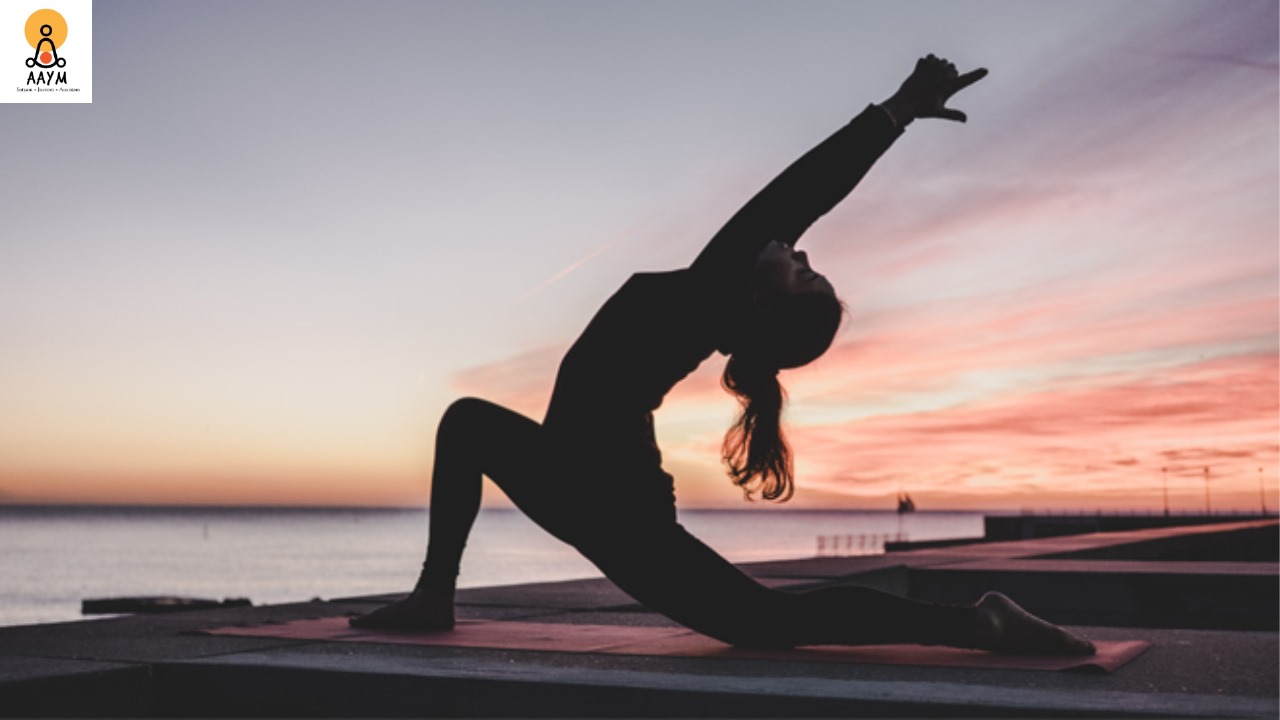Introduction: Why Yoga for Flexibility? Flexibility is one of the core benefits of practicing yoga, and it goes beyond simply stretching muscles. Improved flexibility helps reduce muscle tension, enhance joint mobility, and improve posture. Whether you’re an athlete or seeking a more relaxed body, yoga for flexibility can provide lasting results. Let’s dive into why flexibility is essential, how yoga improves it, and which poses are the most effective for gaining flexibility.
Benefits of Yoga for Flexibility
- Improved Range of Motion: Flexibility enables greater movement in muscles and joints, allowing you to perform everyday tasks more efficiently. With consistent yoga practice, muscles become elongated and supple, making them less prone to injury.
- Injury Prevention: Tighter muscles are more prone to strains, sprains, and other injuries. Regularly engaging in flexibility exercises through yoga lowers the risk of these injuries.
- Enhanced Athletic Performance: Whether you’re a runner, swimmer, or gym enthusiast, flexibility is crucial in enhancing your athletic performance. Yoga helps balance the body, improving muscular endurance and coordination.
- Posture and Alignment: Flexibility in critical areas like the hips, shoulders, and spine helps correct imbalances caused by poor posture. This not only makes daily movement more comfortable but also prevents long-term pain.
- Stress Relief: Tension builds up in tight areas like the hips, neck, and shoulders. Yoga’s focus on deep breathing and mindful stretching helps release stored tension, leading to better emotional well-being.
Best Poses for Flexibility
Certain yoga poses target specific areas of the body to promote flexibility. Whether you’re focusing on your hamstrings, back, or hips, these poses can be adjusted based on your level of flexibility.
1. Downward-Facing Dog (Adho Mukha Svanasana)
This classic pose is excellent for stretching the entire body, including the hamstrings, calves, and lower back. To do this pose:
- Start on your hands and knees.
- Lift your hips up and back, straightening your legs and forming an inverted V-shape.
- Hold for 30 seconds to 1 minute.
Key Benefits: It stretches the spine, shoulders, hamstrings, and calves and helps relieve back pain and tightness.
2. Standing Forward Bend (Uttanasana)
This forward fold deeply stretches the hamstrings and calves while helping to release tension in the neck and shoulders. To perform this pose:
- Stand with feet hip-width apart.
- Slowly hinge from the hips, letting your torso fold over your legs.
- If needed, keep a slight bend in your knees, and reach for your toes or the ground.
Key Benefits: Stretches hamstrings and lower back, helps with stress relief and calming the mind.
3. Butterfly Pose (Baddha Konasana)
This seated pose is great for opening the hips and inner thighs, making it a must-do for anyone with tight hips. To practice:
- Sit on the floor and bring the soles of your feet together.
- Let your knees fall outward and hold onto your feet.
- Gently press your knees toward the floor for a deeper stretch.
Key Benefits: Increases flexibility in the hips, groin, and thighs. It improves posture and can alleviate lower back pain.
4. Low Lunge (Anjaneyasana)
The low lunge stretches the hips, quads, and groin, making it a perfect pose for flexibility and balance. To get into this pose:
- From a standing position, step one foot back, coming into a deep lunge.
- Lower the back knee to the ground, and stretch your arms overhead.
- Hold for several breaths, then switch legs.
Key Benefits: Opens up the hip flexors, groin, and quadriceps while improving stability.
5. Seated Forward Bend (Paschimottanasana)
This forward fold targets the entire back of the body, stretching the hamstrings, lower back, and calves. To perform:
- Sit with your legs extended straight in front of you.
- Slowly hinge from the hips, reaching for your toes or shins.
- Keep the spine long and focus on deep breaths.
Key Benefits: Stretches the hamstrings, lower back, and spine. It improves digestion and relieves stress.
6. Cobra Pose (Bhujangasana)
Cobra pose is a gentle backbend that stretches the spine, chest, and shoulders. It’s great for counteracting the effects of sitting or hunching over a desk. To perform:
- Lie face down with your palms under your shoulders.
- Slowly lift your chest while keeping your lower body grounded.
- Hold for a few breaths and release.
Key Benefits: It stretches the chest and strengthens the spine. It helps improve posture and reduces stiffness in the back.
Tips to Improve Flexibility with Yoga
- Consistency is Key: Flexibility only happens after a period of time, and regular practice is essential. Aim for 3-4 sessions a week to notice gradual improvements.
- Warm-Up Properly: Always warm up before diving into deep stretches. A few rounds of Sun Salutations (Surya Namaskar) can prepare your muscles and joints for more intensive flexibility work.
- Use Props: Yoga blocks, straps, and bolsters are excellent tools for easing into poses. They support and prevent overstretching, allowing you to deepen your stretches safely.
- Listen to Your Body: Yoga for flexibility should never feel painful. Stretching to the point of discomfort can lead to injuries. Practice patience and avoid pushing too hard.
- Focus on Breath: Your breath can be a powerful tool in yoga. Deep, mindful breathing helps release tension and increases your stretch capacity. Inhale to create space and exhale to sink deeper into the pose.
- Hydration and Diet: Staying hydrated and maintaining a balanced diet is essential for muscle health. Foods rich in electrolytes and hydration will ensure your muscles can elongate effectively.
- Rest and Recover: Just as flexibility gains occur with practice, your muscles need time to recover. Allow time for rest and consider including yoga nidra or restorative yoga in your routine.
How Yoga Affects Different Areas of Flexibility
Yoga stretches affect various parts of the body differently. Here’s a breakdown:
- Hamstrings: Poses like Forward Fold and Downward Dog elongate and relieve tight hamstrings, common in athletes and office workers alike.
- Hips: Poses like Pigeon and Butterfly work wonders for unlocking tight hips, especially for people who spend a lot of time sitting.
- Back: Poses such as Cat-Cow and Cobra help release tension in the spine, promoting flexibility and alleviating stiffness.
Conclusion: A Flexible Body, A Flexible Mind
Yoga for flexibility isn’t just about physical agility—it also promotes mental resilience and relaxation. Flexibility allows your body to move through life quickly, reducing injury risk and improving overall quality of life. By practicing consistently, staying mindful, and focusing on your breath, you can enjoy a flexible body’s many physical and emotional benefits.
Remember, yoga is a journey, not a destination, so take your time, enjoy the process, and watch your flexibility grow.

